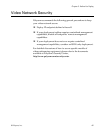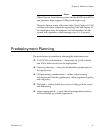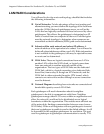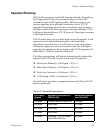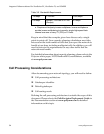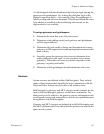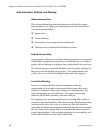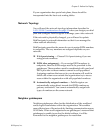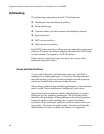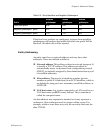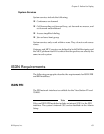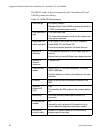Chapter 3 - Before You Deploy
© Polycom, Inc. 57
A well-designed dial plan distributes the dial plan logic among the
gateways and gatekeepers. Try to keep the dial plan logic at the
highest component level — for example, allow the gatekeeper to
handle routing and fail-over decisions. This allows individual zones
to be added or modified without affecting other zones, so the
deployment is very scalable.
To assign gateways and gatekeepers:
1. Determine the area that your dial plan covers.
2. Determine what calling area(s) each gateway and gatekeeper
will be responsible for.
3. Determine the peak traffic volume, and determine how many
gateways will be required to handle anticipated increases in this
peak volume.
4. Logically group the gateways into zones to determine how
many gatekeepers you need. A zone can have one or many
gateways. The number of zones you define depends on the
gateways’ capacity and traffic.
5. Determine which gatekeeper should administer each zone.
Services
System services are defined within PathNavigator. They include
many of the functions that simplify the user’s interaction with the
Polycom Office. System services only work within a zone.
PathNavigator’s gateway and MCU services make it simple for the
user to dial out through a gateway or dial into a conference. For
these services to be effective, the gateway service information such
as call speed, service and zone prefixes, and device capabilities must
be registered with PathNavigator.
Gateway and MCU services are defined in both PathNavigator and
the MGC platform itself. It is critical that the prefixes are exactly the
same in each system.



